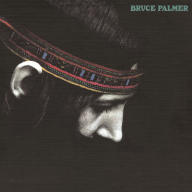Palmer, like fellow Buffalo Springfield member Neil Young, was Canadian, and started playing in Toronto RB and rock roll bands in his mid-teens. In the mid-'60s, he played for a time in Jack London the Sparrows, a British Invasion-like group that had a couple Canadian hit singles (released after Palmer's departure from the band). He then joined the Mynah Birds, with AWOL American sailor (and future funk and soul star) Rick James on lead vocals, in a trade whereby Nick St. Nicholas of the Mynah Birds (and later of Steppenwolf) replaced Palmer in Jack London the Sparrows. In early 1966, Neil Young joined the Mynah Birds, who got a contract with Motown and recorded some material for the label that's never been released. Part of the reason it remained in the vaults is that James was arrested for being AWOL, which broke up the band only a couple of months after Young had joined.
Young and Palmer then undertook a legendary drive to Los Angeles in Young's hearse, the goal being to find Stephen Stills (whom Young had previously met) and see about forming a band. Young and Palmer had no address for Stills, and after several days of searching for him in L.A. they were on the verge of giving up, and decided to head north to San Francisco. But in one of rock roll's greatest strokes of luck, they found him in Los Angeles when a vehicle in which Stills and Richie Furay were riding passed the hearse on Sunset Boulevard going in the opposite direction. Almost immediately, the nucleus of Buffalo Springfield was formed, finalized by the addition of Dewey Martin as drummer.
Although Palmer plays on everything on Buffalo Springfield's first album and most of the second, he's not on most of the band's third and last LP. Actually, he first left the group in January 1967, when he was busted for marijuana possession and deported back to Canada. The group used a couple different bassists (Ken Koblun and Jim Fielder) over the next few months, until Palmer managed to get back into the United States and rejoin in June. Another bust for various offenses, including speeding without a driver's license and drug possession, led to his final departure from Buffalo Springfield in January 1968, Jim Messina taking his place. The group only lasted a few more months without Palmer, disbanding in May 1968.
About a year later, Palmer was briefly considered for the bassist position in Crosby, Stills, Nash Young, but was cut loose after a bit of rehearsal and recording, David Crosby and Graham Nash objecting the most to making Palmer a permanent backup musician. (Two recordings on which Palmer plays, a version of Helplessly Hoping and a cover of Terry Reid's Horses Through a Rainstorm, appear on the Crosby, Stills & Nash box set.) Shortly after that, he took advantage of an offer from MGM to do a solo album, although he had never before written or sung any material. That borne in mind, it's less surprising that his early-'70s solo album, The Cycle Is Complete, turned out to be almost wholly instrumental, comprised of four jam-like tracks mixing psychedelic rock, improvised jazz, and more esoteric styles. Among the musicians backing him were four members of Kaleidoscope and his old bandmate Rick James, who played percussion and occasionally added some scat-like vocals.
Unsurprisingly, the album sold little, and Palmer vanished from the music business. He did unexpectedly resurface to play live with his old friend Neil Young in the early '80s, also contributing to Young's Trans album. In the mid-'80s he formed the tribute band Buffalo Springfield Revisited, in which Dewey Martin was the sole other original Buffalo Springfield member. Palmer passed away October 1, 2004 after suffering a heart attack. ~ Richie Unterberger, Rovi


















